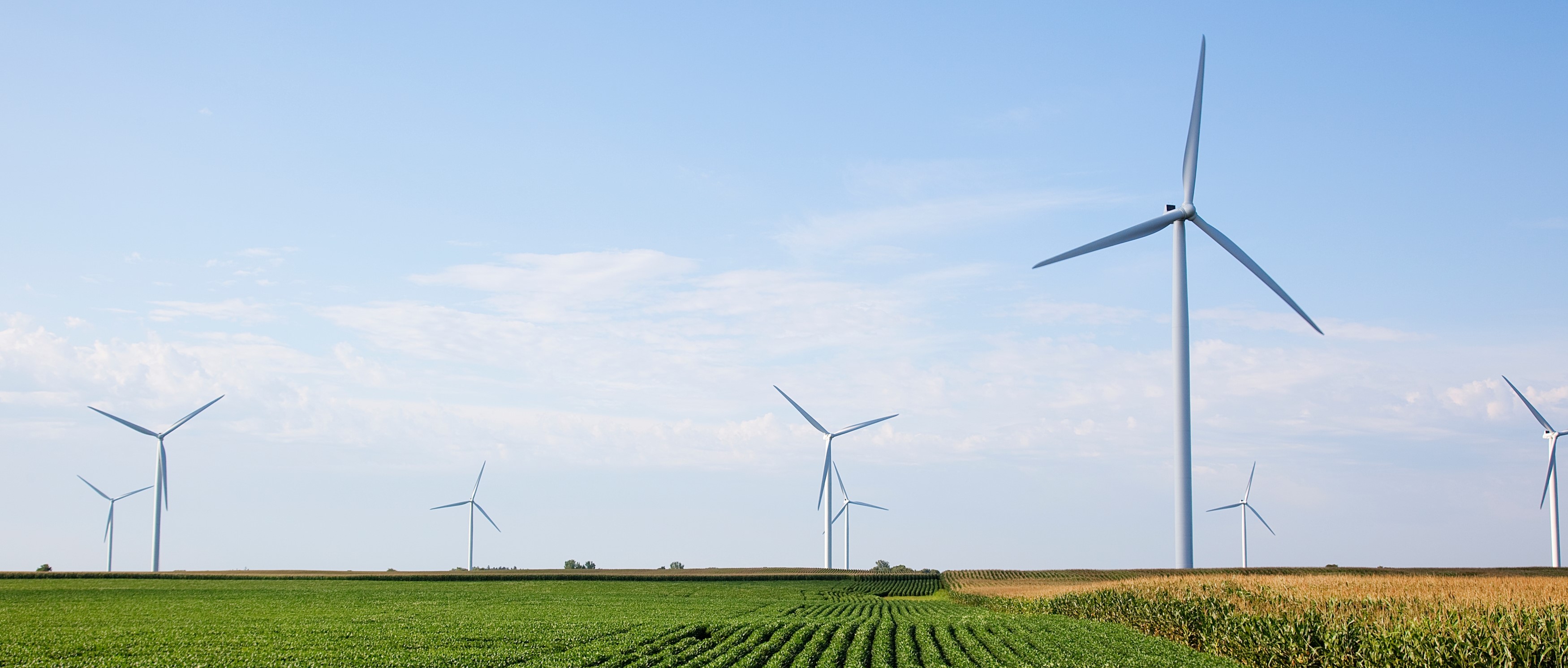Jayce Jimenez is a law student in the HLS Food Law & Policy Clinic and a guest contributor to this blog.
What comes to mind when you think of the Inflation Reduction Act (IRA)? As the name suggests, the IRA was aimed at curbing rapid inflation that occurred as a result of the COVID-19 pandemic. However, the IRA is additionally and, perhaps, better known for its substantial investment towards addressing the climate crisis. If you follow the news, you probably remember hearing phrases along the lines of “historic climate deal” or “most important climate action in U.S. history” used to describe the passage of the legislation. With total federal funding for climate efforts coming in at almost $400 billion, these claims would appear to be justified.
While the majority of this funding comes in the form of tax credits used to incentivize climate-friendly actions and investments, the IRA also includes substantial funding for rural clean energy development, by which I mean the expansion of projects that decrease greenhouse gas emissions from energy produced in or for rural communities. In total, over $10 billion has been set aside in the IRA for clean energy development in rural communities, taking the form of loans, grants, and other financial assistance.
More specifically, the IRA includes $1 billion in funding for the Powering Affordable Clean Energy (PACE) program, $2.025 billion for the Rural Energy for America (REAP) program, and $9.7 billion for the Empowering Rural America (New ERA) program. Rural clean energy development in this context looks different depending on the specific program. PACE provided funding in fiscal year 2022 (FY22) for renewable energy and renewable energy storage projects that generate electricity for resale in rural communities. Unlike PACE, the majority of REAP’s appropriations do not necessitate clean energy development. However, approximately $300 million is set aside ($145 million for FY22 and $32 million each year thereafter) for clean energy projects. More specifically, this allocation financially assists “agricultural producers” and “rural small businesses” with energy efficiency upgrades and renewable energy systems. New ERA funded energy efficiency improvements, renewable energy, zero-emission systems, and carbon capture storage systems in FY22.
U.S. Department of Agriculture’s Role
So why am I writing about rural clean energy development in a food policy blog? It just so happens that the U.S. Department of Agriculture (USDA) is heavily involved in this space. If you’re like me, when you hear “Department of Agriculture,” you think of, well, agriculture. Be that as it may, the USDA is the agency charged with implementing IRA funding for rural clean energy, which is administered through the office of Rural Development. And boy do they have a lot to administer. Implementation of this funding represents not only a sizable investment in rural clean energy, in fact, it is the single largest federal investment in rural electrification in any form since the New Deal, when FDR signed the Rural Electrification Act. Indeed, PACE and New ERA never existed before FY22, and REAP appropriations more than doubled from the prior year (FY21). So far, projects awarded under PACE amount to about $139 million and include funding for battery energy storage, solar energy expansion, and building and improving power lines for rural areas. More projects will be awarded in the coming months. Under REAP, the entirety of funding allocated to FY22 ($145 million) has been awarded, and includes primarily projects relating to solar energy installation and energy efficiency improvement.
Importance of Rural Clean Energy Development
Investing in rural clean energy electrification provides benefits both economically and environmentally. From an economic standpoint, the acceleration of renewable energy development in rural America leads to new jobs, introduces new potential revenue sources into the local economy, and decreases energy costs. Keeping energy costs low is especially important in rural communities, where household income lags compared to urban areas. These benefits are in addition to the more obvious justification of deploying clean energy in order to reduce carbon emissions and attack the climate crisis from every possible angle. Furthermore, investment in rural electrification more generally, through upgrading the power grid, will help to prevent power outages caused by extreme weather, which will become more frequent due to the climate crisis. While the USDA has a lot of work ahead of them, the successful implementation of the historic IRA funding will substantially benefit rural communities.
The views and opinions expressed on the FBLE Blog are those of the authors and do not necessarily reflect the official policy or position of FBLE. While we review posts for accuracy, we cannot guarantee the reliability and completeness of any legal analysis presented; posts on this Blog do not constitute legal advice. If you discover an error, please reach out to contact@farmbilllaw.org.

